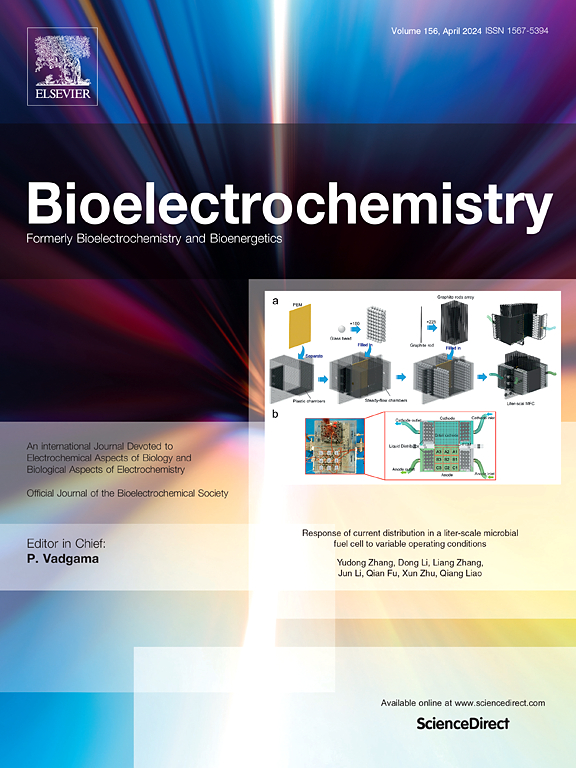Print-Light-Synthesis of ruthenium oxide thin film electrodes for electrochemical sensing applications
IF 4.8
2区 化学
Q1 BIOCHEMISTRY & MOLECULAR BIOLOGY
引用次数: 0
Abstract
Print-Light-Synthesis (PLS) combines the inkjet printing of a ruthenium precursor ink with the simultaneous photo-induced generation of ruthenium oxide films. During PLS, inkjet-printing generates on conductive as well as insulating substrates micrometer-thin reaction volumes that contain with high precision defined precursor loadings. Upon direct UV light irradiation, the Ru precursor converts to RuO2 while all other ink components escape in the gas phase. No post PLS processes are required, and the as-obtained RuO2 films can be immediately used as electrochemical devices. Two-dimensional RuO2 patterns with micrometric resolution and highly-controlled ruthenium loadings (few µg/cm2) are realized. Thin RuO2 films are generated on insulating substrates, such as polyimide, as well as individual RuO2 particles on conductive substrates, such as graphene layers. The RuO2 films are characterized by electron microscopy and spectroscopic techniques. The sensoristic applicability of the PLS-RuO2 electrodes is demonstrated by potentiometric pH sensing in cell cultures and amperometric detection of L-cysteine. For pH sensing the RuO2 film electrodes show Nernstian sensitivity. L-cysteine detection of RuO2-modified graphene electrodes showed an electrocatalytical effect and resulted in the possibility of selectively detecting L-Cysteine also in presence of the interfering compound uric acid.
求助全文
约1分钟内获得全文
求助全文
来源期刊

Bioelectrochemistry
生物-电化学
CiteScore
9.10
自引率
6.00%
发文量
238
审稿时长
38 days
期刊介绍:
An International Journal Devoted to Electrochemical Aspects of Biology and Biological Aspects of Electrochemistry
Bioelectrochemistry is an international journal devoted to electrochemical principles in biology and biological aspects of electrochemistry. It publishes experimental and theoretical papers dealing with the electrochemical aspects of:
• Electrified interfaces (electric double layers, adsorption, electron transfer, protein electrochemistry, basic principles of biosensors, biosensor interfaces and bio-nanosensor design and construction.
• Electric and magnetic field effects (field-dependent processes, field interactions with molecules, intramolecular field effects, sensory systems for electric and magnetic fields, molecular and cellular mechanisms)
• Bioenergetics and signal transduction (energy conversion, photosynthetic and visual membranes)
• Biomembranes and model membranes (thermodynamics and mechanics, membrane transport, electroporation, fusion and insertion)
• Electrochemical applications in medicine and biotechnology (drug delivery and gene transfer to cells and tissues, iontophoresis, skin electroporation, injury and repair).
• Organization and use of arrays in-vitro and in-vivo, including as part of feedback control.
• Electrochemical interrogation of biofilms as generated by microorganisms and tissue reaction associated with medical implants.
 求助内容:
求助内容: 应助结果提醒方式:
应助结果提醒方式:


